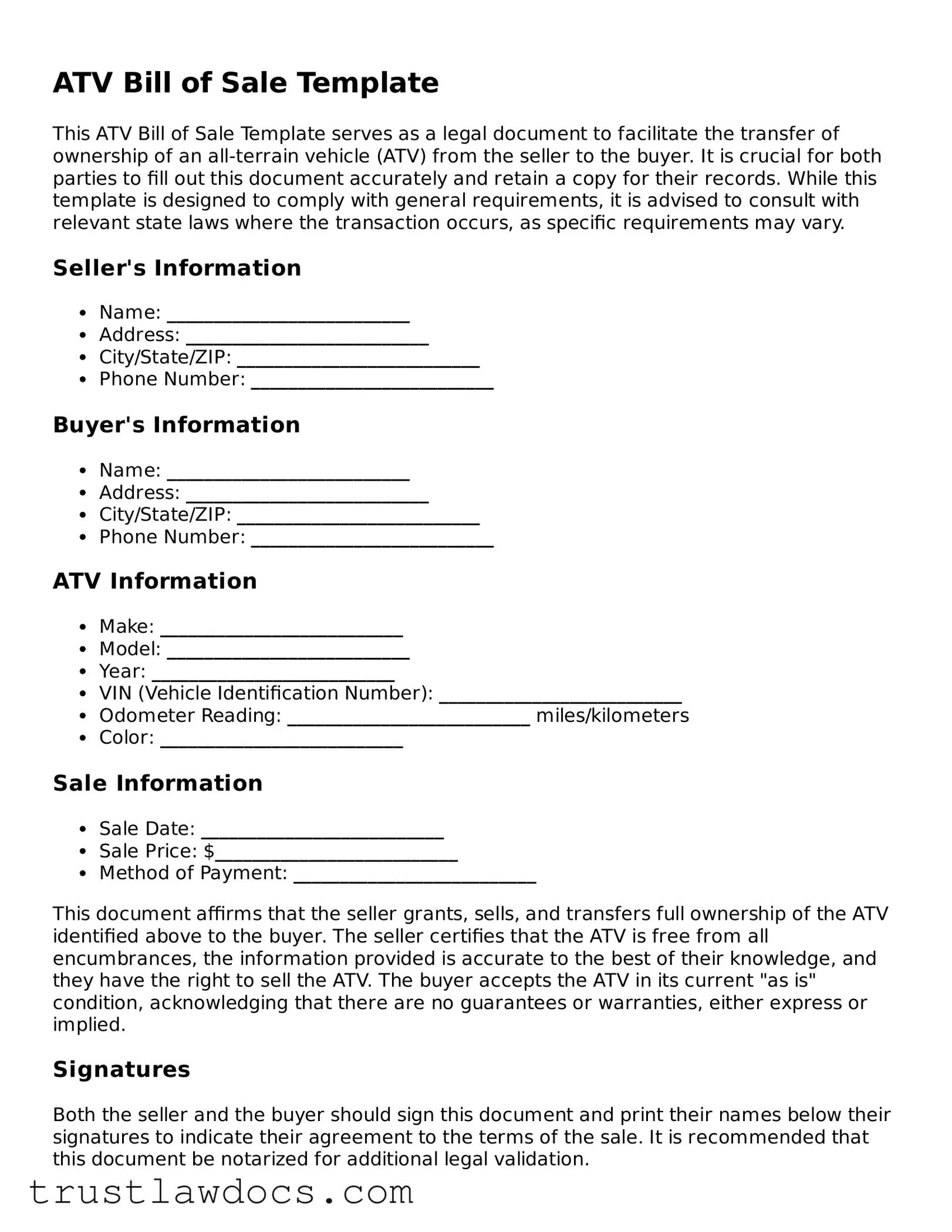An ATV Bill of Sale form is closely related to a Vehicle Bill of Sale form. Both documents serve as legal proof of a transfer of ownership between a seller and a buyer. They typically include crucial information such as the make, model, year, and identification number of the vehicle, whether an ATV or a car, alongside the sale date and purchase price. This form legitimizes the transaction, making it an essential record for both parties.
Another document similar to the ATV Bill of Sale is the Boat Bill of Sale form. This document acts as evidence of a transaction involving a watercraft. Similar to the ATV Bill of Sale, it captures details about the boat being sold, including its make, model, year, and Hull Identification Number (HIN). It solidifies the sale agreement, providing a legal footing for the ownership transfer and ensuring that the details of the transaction are properly recorded.
The Motorcycle Bill of Sale form shares similarities with the ATV Bill of Sale form as well. It is used to document the sale and transfer of ownership of a motorcycle from one party to another. Like its counterparts for ATVs and other vehicles, this form includes details about the motorcycle, such as its VIN, make, model, and year, along with the sale price and date. This form is critical for legalizing the transaction and can be necessary for registration purposes.
A General Bill of Sale form is also similar to an ATV Bill of Sale, albeit more versatile. This form can be used to document the sale of various items beyond vehicles, such as electronics, furniture, or even pets. Despite its broader application, the core function remains the same: to provide a written record of a transaction, including details about the item sold, the sale price, and the parties involved, thereby legalizing the transfer of ownership.
The Firearm Bill of Sale form parallels the ATV Bill of Sale in its role as a transactional record, specifically for the sale of firearms. It captures critical information about the firearm, such as the make, model, serial number, and caliber, alongside the buyer’s and seller’s details. This form is particularly important due to the legal requirements surrounding firearm ownership transfers, making it a vital document for both parties involved.
Equipment Bill of Sale form is akin to the ATV Bill of Sale when it comes to transactions involving machinery or heavy equipment. Like the ATV form, it documents the specifics of the equipment sold, including make, model, and serial number, in addition to the sale price and transaction date. This form is instrumental for business-to-business transactions or when selling large items, ensuring a legal transfer of ownership.
The Pet Bill of Sale form is slightly different but still shares the core concept of documenting a transfer of ownership. Instead of vehicles or equipment, this form is used for the sale of animals. It might include details about the breed, age, and health of the pet, along with the transaction details. This document is crucial for formalizing pet sales or adoption agreements, firmly establishing the legal ownership of the pet.
Lastly, the Real Estate Bill of Sale form, although dealing with immovable property, is conceptually similar to the ATV Bill of Sale. This document is used to transfer ownership of real estate and includes information about the property, the parties involved, and the sale terms. While it's more complex due to the nature of real estate transactions, its fundamental role as a legal record of a sale and transfer of ownership aligns with that of the ATV Bill of Sale.
